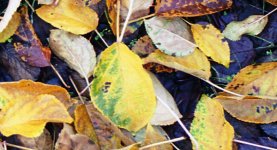venchka
Veteran
I forgot something important:
Flatbed scanners deposit crud on the underneath side of the glass. It's fairly easy to get the top off and clean the glass. My friend & I both did it to our scanners and saw an instant improvement.
Flatbed scanners deposit crud on the underneath side of the glass. It's fairly easy to get the top off and clean the glass. My friend & I both did it to our scanners and saw an instant improvement.



